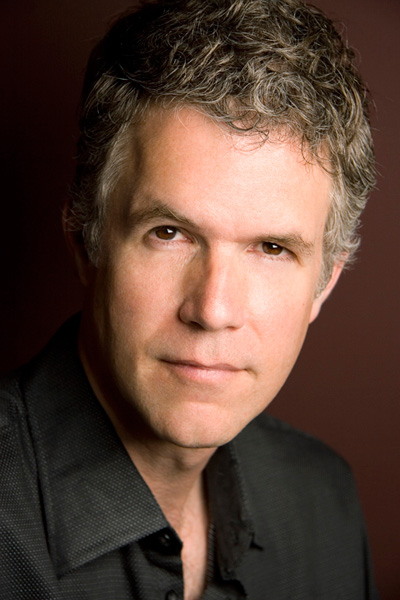
 After last week’s column, I was inundated with requests for more uninteresting stories from the world of bluegrass, or any other worlds that may contain tales of the boring and predictable.
After last week’s column, I was inundated with requests for more uninteresting stories from the world of bluegrass, or any other worlds that may contain tales of the boring and predictable.
I had no idea there was this unfulfilled need out there, but now that I know there is, I’m at work on a whole new boring web site that will feature in-depth profiles of people you’ve never heard of that have very little to say, reviews of bland recordings, and a forum for dull and tedious discussions. After we launch it (we’re projecting 2019, or possibly never) the first 100 visitors to the site will receive a pound of our specially blended, extra weak, half-caff, “timid roast” coffee, along with a beige keychain with someone else’s initials on it. Yes, we have big plans.
In the meantime, though, since I’m just returning from a European tour that wasn’t nearly boring enough to produce any suitable stories, I’d like to address an issue that may generate some controversy, or at the very least has a decent chance of being misunderstood: The accessibility of bluegrass artists.
Bluegrass music may lead all forms of music for having performers that are completely available to their fans almost all the time. This is a reflection of something very positive: bluegrass artists generally understand that they are no better than the people who come to hear them, and they feel no need to create artificial barriers that create that impression. Our world is mercifully lacking in security teams, press agents, handlers, and entourages, though just one time I’d really like to see Dave Evans with an entourage.
This is one of the many good aspects of our music: performers have a strong bond with the members of the audience because of our easy, unfiltered interaction with each other. I personally enjoy spending time with fans (even some of the crazy ones), and many people who started out as fans have become close friends (especially the crazy ones). Those friends are for me part of a worldwide community that I cherish.
I have noticed, though, that there can be a down side to this approachability: the expectation that artists should be available to anyone at all times, and that it’s okay to say anything you want to these artists, and that they should be able to take it because, after all, “they work for the fans.”
Then, of course, there’s the whole issue of social media, and artists feeling pressured to stay in touch with their fans at all times, and their fans in turn feeling that they should have total on line access to the artists. Chris Stuart articulated this problem very well here when he suggested that a band try to differentiate itself completely by rejecting all social media. I loved the idea, yet without social media, fans would never get to see artists’ constant tweets and status updates like “Coffee at the Dayton Holiday Inn Express. Mmmm. . .” or the self-promoting: “We rocked a full house last night in Bozeman. We love you, Montana!!”
I remember once being threatened (mildly, I’ll admit, just some small-scale arson) on more than one occasion by fans because I hadn’t added them as Facebook friends. After all, how dare I use social media just to keep up with family and friends! I learned then that there needed to be separate fan sites and personal sites, and yet there still may be hard feelings because I don’t add people I don’t know to my personal social media sites.
We all use social media, though, because today everything has to be part of a “conversation.” But does the conversation ever end? There’s very little opportunity now to simply say, “Well, I’d better move along” or, as has always worked for me, “Excuse me, I have to go change the chips in the hamster cage.” Even the cable news people, who are fond of saying “We’ll have to leave it there,” add that “you can join the conversation” on the various social media sites. Welcome to the endless discussion.
The primary point of physical access for fans and artists is the record table, as some of us who are fond of quaint terms still call it. There, fans can come up, chat with the artists about whatever’s on their mind, buy one of the artist’s CDs, or their new logo-emblazoned tooth brushes.
This is usually a good thing, but for some reason, some fans consider this an opportunity to say almost anything they feel like to the artists, including commentary on the weakness of their show, the increased weight of the lead singer, the banjo player’s grey hair, or how good the band used to be when so-and-so was still in it.
I can’t tell you the number of times people have come up to me and said “You look tired!” It’s likely that I was tired, since I had probably just driven 600 miles to get there, but I finally realized that people just think I’m younger than I am, but that I’m having a bad day. I finally started coming back with, “No, I’m just old. This is how I’m supposed to look.” I got even testier on day 4 of a particularly grueling IBMA World of Bluegrass when someone told me I looked tired (who doesn’t there?), and I replied: “Is that the best you’ve got for small talk?”
Artists are also not always in the mood for an instant critical analysis of the show they just did, but most take it with a smile anyway: “You guys started out kind of slow but you got going there after the fourth or fifth song. I even liked that joke about the goat and the pizza, even if no one else laughed. I’m not a fan of the originals, but that’s just me.” I can’t help but think that Elton John and Shania Twain don’t get a whole lot of that after a show.
I’m not saying that bluegrass pickers should adopt the sheltered public lives of the superstar types (people would just laugh anyway), but maybe there’s a happy medium somewhere.
Female bluegrass musicians get some real zingers at the record table. When I played with Lynn Morris, I recall all the variations on “You pick that banjo pretty good for a girl,” which included (and I’m not making this up): “You’re no Roy Clark on the banjo, but you’re pretty good.” Some women, I realize, are steeled from having gone through a lifetime of inappropriate comments, but it doesn’t make it any better.
A more exhaustive list could be offered here, but highlighting just a few, it’s a good rule of thumb not to say these things as an opening line to artists, or to anyone in the world, really. These have all been said to me or to someone I was standing next to at a record table at one time or another:
- “You’ve gained weight since last year.”
- “Is that picture on your CD really you? You look so much older now.”
- “Are you pregnant?”
- “Too bad you can’t keep a band together. I really liked the last bunch a lot better than the ones you have now.”
- “Dying your hair a different color now, I see.”
- “I normally don’t like your stuff, but that show was pretty good.”
- “I’m still waiting for you to blow me away.”
Another point that should be made is that not all musicians and artists are particularly social people, and that’s actually okay. This doesn’t necessarily mean they’re stuck up or aloof. While it’s certainly helpful in the realm of PR when an artist is also an outgoing “people person,” this is not actually a requirement of a musical performer, as long as that person is doing a good job on stage. But people tend to judge artists that are reluctant to chat with people for hours after a performance.
There’s no doubt, of course, that even introverted artists need to spend some time with their audience. It’s a responsibility, and if they avoid it completely or are rude to fans, fans have a right to consider them unfriendly, and shouldn’t be blamed for scheduling a ceremonial burning of their 8×10 photo.
For the more outgoing artists, the post-show chatter is as rewarding as audience applause or CD sales. They thrive on it, and could probably stand and visit for hours. That’s okay too. In that case, it may be the fan that suddenly remembers some pressing domestic responsibility.
Now if you’ll excuse me, it’s time to change those chips.





